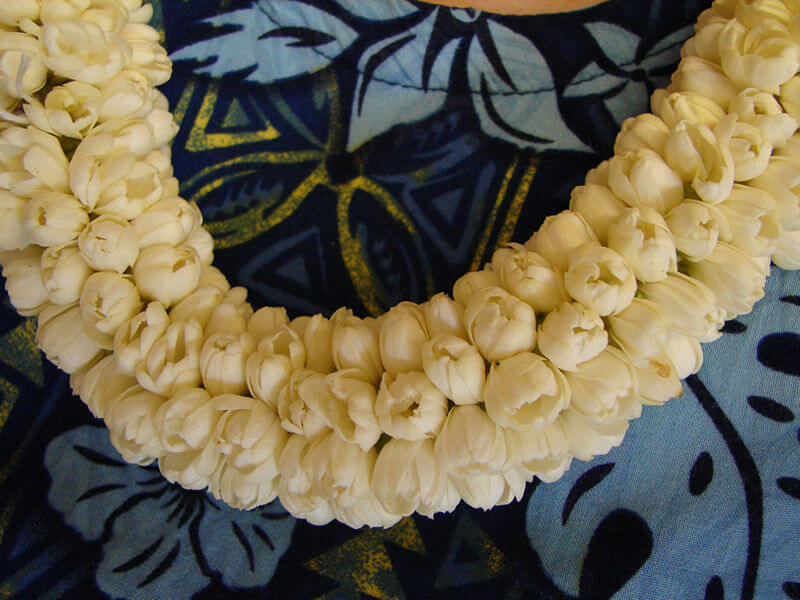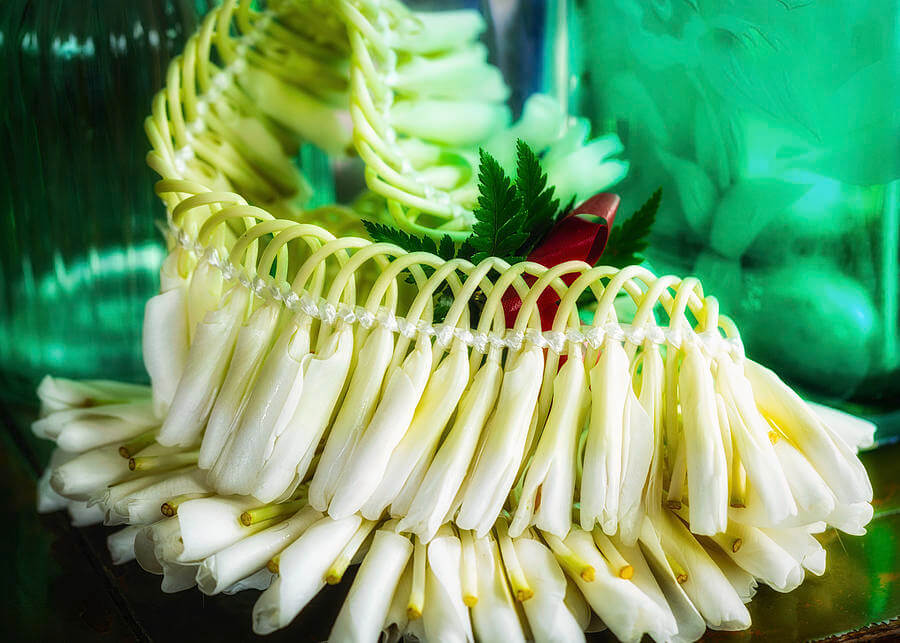May Day doesn’t have to be the only occasion for giving or receiving a lei—beautiful necklaces of flowers, leaves, feathers, or shells that have come to be associated with the Hawaiian Islands. The lei, which has a deep Polynesian tradition, was worn by ancient Hawaiians for ornamentation as well as to differentiate themselves and for ceremonial purposes. Tourism drove its brisk popularity, with lei merchants springing up along Aloha Tower during the steamship era and locals buying and selling lei to greet visitors. It’s a long-standing tradition that may still be witnessed today.
We traversed the alleys of Honolulu’s Chinatown to see some of the numerous lei dealers and found these seven lovely lei. Even though they are a little variety, they are some of the most sought-after heavenly-scented flower lei in town.
Pikake Lei

These gorgeous, small, delicate blossoms have a strong scent—so strong, in fact, that you’ll generally smell them before you see them. Don’t let that deter you from purchasing three, four, or five strands of this lei, which adorns everyone who wears it. Though the rest of the world knows these blossoms as Arabian Jasmine, Hawaii’s Princess Kaiulani lovingly named them pikake (peacock) after her favorite bird.
Purple Orchid Lei

The bright and vivid orchid lei, which is not originally Hawaiian, is one of the most common lei seen at airports and luau greets. They are stronger than most other flowers, endure longer, can be coloured, and have no scent, making it a lei that is genuinely suitable for everyone and any occasion.
Tuberose and Ti Leaf Lei

Both men and women can wear this open-ended lei made of two strands. The broad-leafed ti plant was carried to Hawaii by canoe with the early Polynesians. It’s one of Hawaii’s most adaptable plants, utilized for medicine, shelter, clothing, and food, and its leaves are braided together to make the ti leaf lei. Tuberose, on the other hand, is native to Mexico and was imported to Hawaii in contemporary times, but has since become an important element of Hawaiian culture. Songs have been composed in its honor, and the lei is popularly given on all occasions.
White Ginger Lei

The awapuhi keokeo (white ginger) lei, which originated in India and was carried to the Hawaiian Islands by early Polynesians in canoes, is a magnificent decoration that lies flat with its petals facing outwards, emitting a wonderfully pleasant aroma.
Pua Kenikeni

One of the most fragrant blooms is the trumpet-shaped flower of the pua kenikeni tree. It was introduced to Hawaii in contemporary times and has since spread throughout the Pacific, where it was simply known as pua (flower). In Hawaii, it was given the name pua kenikeni (“ten-cent flower”) because each blossom was once sold for ten cents when it was initially used to make lei.
Maile Lei

The tendrils of the aromatic maile plant, the lone Hawaii native on this list, are used to make this leafy lei. It is typically worn open-ended and given on significant events such as weddings or graduations.
Hee Berry and Sea Grape

This twisting lei of berry and green sea grapes is made in the festive colors of red and green. The hee berry, named after the Hawaiian word for octopus because to the tree’s long branches, is also known as the Christmas Berry due to its beautiful red hue. Both are common, invasive species in Hawaii that should not be eaten, but they will survive a long time for the wearer who also wants a keepsake.
